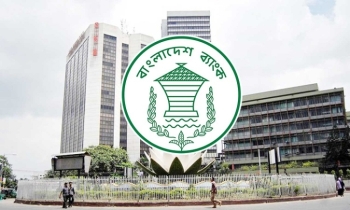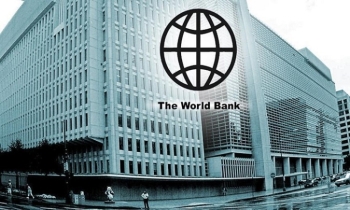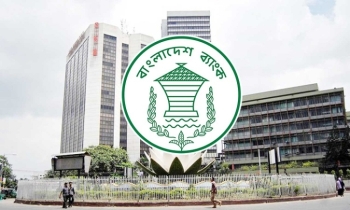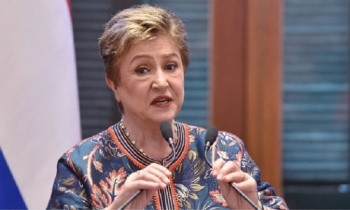Deposit in banks rises, loan disbursement falls in 1st half of FY 2023-24
BI Report || BusinessInsider
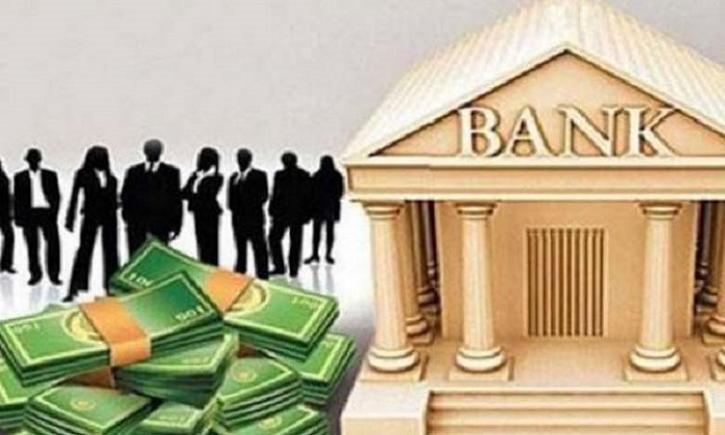
Photo: Collected
The deposit in the country’s banking sector increased while the amount of the loan disbursement declined significantly during the first half of the current Fiscal Year.
The deposits increased by around Tk 41,000 crore compared to the same period of the previous year, however, the loan disbursement decreased during the same period, according to the information of the Bangladesh Bank (BB).
Experts said that the deposits in the banking sector have begun to increase due to the withdrawal of the interest rates, ranging from six to nine percent. Consequently, deposits have surged several times compared to the previous periods.
On the other hand, credit disbursements have decreased due to a reduction in Letter of Credit (LC) openings. This decline is attributed to the fact that most LCs are opened after obtaining loans from banks.
However, a liquidity crisis looms in the banking sector due to borrowers failing to repay loans. This situation is exacerbated by many banks experiencing a disparity where they have more outstanding loans than deposits, reports Share Biz, the first Bangla business daily in Bangladesh.
to the central bank report, in the first six months (July-December) of the financial year 2023-24, deposits in the banking sector increased by Tk 59,033 crore which was Tk 18,114 crore in the same period of the last fiscal year.
That means, in the first six months of the current financial year, deposits increased by Tk 40, 919 crore or 226 percent compared to the same period in the previous year.
At the end of December last year, the deposit status in the banking sector stood at Tk 16, 54, 288 crore.
The loan disbursement in the first half of the current fiscal year stood at Tk 44,451 crore, however, the amount was Tk 90,013 crore in the same period of the last fiscal year.
The data shows that the loan disbursement has decreased by Tk 45, 562 crore or 50.61 percent. Besides, at the end of December, the credit disbursement status in the banking sector stood at Tk 19, 71, 222 crore.
While talking to the Share Biz, Shajalal Islami Bank Managing Director (MD) Mosleh Uddin Ahmed, said that the deposits in the banking sector are increasing mainly due to the withdrawal of the interest rates on loans from six to nine percent as now the banks are disbursing loans with 13 percent interest.
Many banks have raised their interest rates on deposits, leading to an increase in deposits. However, the opening of Letters of Credit (LCs) has significantly decreased due to reduced loan disbursements, as much of the post-import financing depends on obtaining bank loans.
He also said that it is becoming difficult to do business in various sectors especially in spinning, dyeing, washing and ceramics sectors due to the increase in electricity and gas prices. The cost of doing business has increased due to the inflationary pressure.
Consequently, individuals and entities needing loans are unable to secure them as needed, leading to a decrease in demand for loans.
Additionally, the reduction in credit growth by the Bangladesh Bank aimed at controlling inflation also has significant implications in this context.
The government and Bangladesh Bank have imposed stricter restrictions on the opening of import LCs due to the dollar crisis. As a result, the opening of LCs for import has decreased by 5.33 percent in the first six months of the current financial year. During the same period, LC settlements fell by more than 18 percent.
Responding to a query he said loans have outpaced deposits in some banks, resulting in difficulties in loan collection. This imbalance is exacerbating the liquidity crisis within these banks.
Due to the liquidity crisis now banks are borrowing Tk 15 to Tk 20,000 crore from the central bank every day. And, various banks took Tk 18, 567 crore in liquidity assistance from the central bank last Monday.
Meanwhile, during the first six months of the current financial year, the government's net bank debt was in a negative state.
According to the report, in the first six months, the net bank debt was negative by Tk 3,011 crore. Whereas Tk 26, 022 crores was positive in the same period of the last financial year.
In the current financial year, the government has withdrawn money from commercial banks and paid it to the central bank through treasury bills and bonds. As a result, bank loans took a negative turn during the period.
Meanwhile, the government has raised interest rates on treasury bills and bonds several times to collect loans from commercial banks.
The interest rate for the last 91-day government treasury bill till February 19 was 11.35 percent. The highest interest rate on the treasury bills of the same duration was 7.45 percent till October 2.
Besides, the interest on 182 and 364 days treasury bills was 11.45 percent and 11.60 percent respectively. The interest rate of these bills was 7.60 percent and 8.25 percent respectively till October 2.
The inflation went up in the last fiscal year as the government borrowed money from the central bank and to avoid inflation, the government is now taking loans from commercial banks in the current fiscal year.
The interest on treasury bills and bonds has increased as the government is borrowing from commercial banks at a high interest rate, added the BB official.

